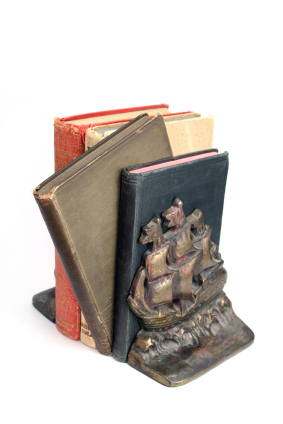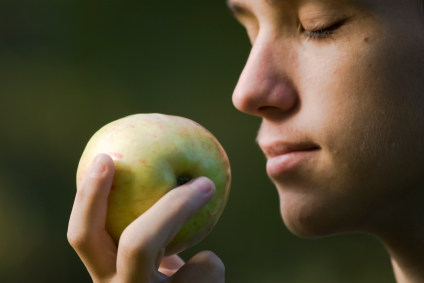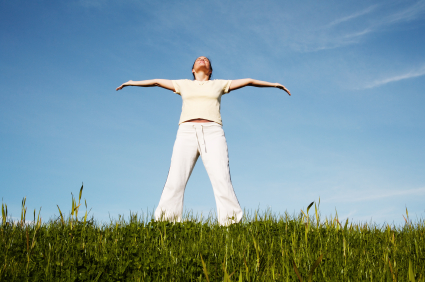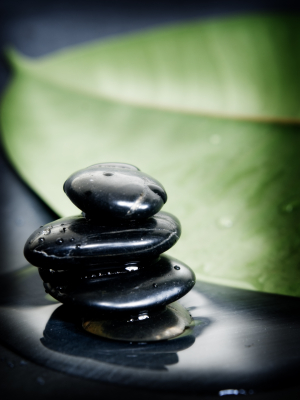 In the first post of this series I discussed how Coming to Your Senses is an important step in helping you spend more time in the heart-centered present. Doing so will increase the level of wellness you experience in your life and in your entrepreneurial business.
In the first post of this series I discussed how Coming to Your Senses is an important step in helping you spend more time in the heart-centered present. Doing so will increase the level of wellness you experience in your life and in your entrepreneurial business.
Another factor that plays a vital role in wellness levels is our ability to sort through and process the mountain of information we encounter each day while remaining sane. Listening to or reading about the million ways there are to run our businesses, write our blogs, take care of our bodies, (and even to improve our wellness levels), can be overwhelming.
While there is no magic word, like abracadabra, or quick-fix, to make all the conflicting information and opinions disappear, there is something that you already possess that will help tremendously…although it may be worn out or have been a while since you’ve used it. It’s your unique blueprint of what’s important.
Learning to focus on what’s important is what this post is all about. It’s the real secret to balancing entrepreneurial success with wellness.
What’s Important
Remember the “I Love Lucy” episode where Lucy worked in the candy factory wrapping chocolates? Remember how the conveyor belt shot so many chocolate candies out that Lucy couldn’t keep up and so she popped handfuls of them into her mouth? Can’t you just see the scene in your mind’s eye?
Well, I remind you of this image not just for a trip down memory lane but to draw a comparison to our entrepreneurial lives. With To Do lists a mile long, email messages and in-boxes filled to overflowing, we too struggle to keep up. And as we do we can lose sight of what is important. I know I’m not the only one who’s headed to the web, followed a link or two (or three) and wound up mega-minutes later somewhere I had no idea I would be, completely losing track of time and what it was I was looking for in the first place.
We all agree that it has become more critical than ever for us to be clear and focused on what is important, but how do we do that?
Intention
Well, it boils down to this: the trick is to take time each morning to set our intention for the day – to set our intention around the values we want to embody and to make it our intention to take, as one of my coaching mentors, Mike Jay, calls it, “right action” in our lives that day. This is substantially different from setting up our To Do or Action lists (even those we carefully pull together with elegant GTD techniques for those of you like me who use them.) I have a way for you to set your intention, but first a bit more about “right action.”
“Right Action”
In short, “right action” to me means operating from the inside out – putting the souls of ourselves into what we do. Setting our intention to take “right action” for the day asks us to expand our perspective about how we spend our time and what we do each day. It’s up to each of us to name our top values and determine what it is that, for each of us, constitutes “right action.”
 Daily Practice
Daily Practice
I think it’s important to start and end each day with a daily practice that helps us focus on “right action”. We can take a brief moment of time in the morning to name what’s most important for the day—not just the Doing, but more importantly, the Being that we want to embrace. Then before retiring for the night, we can check in and ask ourselves if we were able to focus on what’s important or not and what we learned. I call this practice, “Bookends.”
It takes 10 minutes in the morning and 10 minutes before bed, and it could well be some of the most important minutes you spend in a day. It is for me.
Try this: Bookends™ Exercise
10 Minutes Upon Awakening:
•Take a moment to sit up, stretch and greet the day. Now think about the attitude or state of Being that you intend to bring forward into your day today. Examples: Gratitude, Confidence, Self-Compassion.
•Write down that state of Being you want to focus on today.
•Now think about the area of your life and/or business that is of most importance to you right now. Of all the To Do’s that are before you today, which action is going to further your progress in that area or deepen your learning? Example: writing a business plan
•Write that action on your notepad.
•Take another moment to contemplate how you will integrate the Being and Doing focus that you have listed. Imagine that you are placing that value or state of Being right into your heart or soul and will carry it with you as you take the important action(s) you need to take today.
• Example of how this could look: Writing a business plan while Being in a state of Self-Compassion could mean I pour myself a cup of tea and sip it while I write the plan, extend self-compassion by not insisting the plan be perfect, turn off the ringer on the phone so I am not disturbed.
Reminder: It’s more important to remember you can always return to that state of Being throughout the day, than it is that you give yourself a new mandate to try and stay in that state. Being mindful that you have let your focus slip from, say Self-Compassion, you can apply the 4-step process I talk about in my book: Stop, Breathe, Notice, and Choose™ and gently bring yourself back to your desired state of Being as you Do the next important task in your day.
10 Minutes Before Bed:
•Write a few sentences about the exercise for the day, or simply review this list of 7 inquiries: Where was I able to stay in the state of Being that I selected this morning and/or return to that state when I veered off the path? What evidence shows me that I lived by my top values today? What did I do that helped me take “right action” today? What got in the way? How can I change that in the future? What will I have to say “Yes” to and what will I have to say “No” to, so that I can keep on track? What else did I learn?
•Extend gratitude to yourself for your commitment to What’s Important.
And try this: A Bigger Time Out to Regroup
Maybe it’s been awhile since you’ve taken time to clarify your values. Maybe it’s been awhile since you put together or revised your life plan, business plan, or investment strategy and tied these to your values. Maybe you want to reassess your values before doing the Bookends exercise.
Today, why not schedule an appointment with yourself very soon to at least begin? The appointment doesn’t have to be formal. It could even be an hour at a coffee shop or a few hours in the garden, where you spend time mulling over and identifying what’s important. Or it could be time with a notebook, a friend, a coach, or a colleague to sort through your values. Just be sure to make the time to stop the chocolate conveyor-belt of life for a bit and regroup.
Discipline
Creating lives that reflect our values and top priorities takes “discipline.” I’ve found that word makes some people shutter. But it’s fascinating to know that the root of the word “discipline” is “disciple.” That could be a loaded word for some of you. But I’ll take the risk and use it. Encouraging you to be a disciple of your own soul seems worth any feathers I might ruffle.
So I ask each of us to ask ourselves regularly: Am I willing to become a “disciple” of what is important to me? Sure, I can name what’s important, but am I acting on it? And, if not now, then when?
Practicing the Bookends exercise and asking myself these questions keeps me focused on what’s important and boosts my wellness levels. Give it a try. Let me know what you think.
Table of contents for Living in the Richness of the Moment
1. Living in the Richness of the Moment: Come to Your Senses
Tags: General Wellness Tips, Matters of the Heart, Meditation, Mind, Spirit, Wellness Coaching, Wellness of Your Business by Erica Ross-Krieger
Comments Off on Living in the Richness of the Moment—Part 2: What’s Important? or Did Lucy Ricardo Stop to Ask?
 Welcome Spring and all that is new.
Welcome Spring and all that is new.![]()








